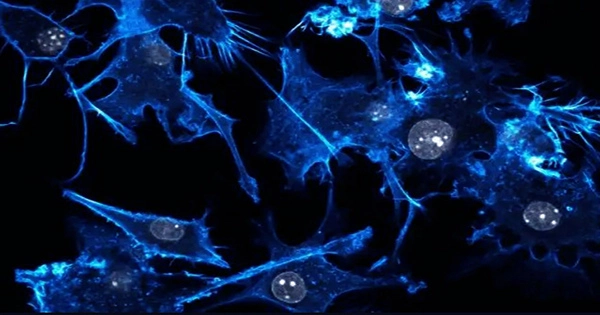The endeavor to freeze recently departed people’s remains in the hope that they may be awakened and treated at some distant point in the future has a very bleak history. Early attempts at cryonics were detailed in gruesome detail in an article that was first published in Cryonics in 1992 in an effort to learn from other’s failures.
Some of the issues are caused by the freezing procedure itself. The biggest issue with cryonics is that the ice crystals that eventually develop in your cells would completely ruin them and render them unrecoverable. Currently, the most likely outcome is that you will turn into and most likely remain an unrevivable popsicle rather than waking up in the future after being resurrected by future scientists.
The Cryonics business Alcor had the chance to examine the effects of freezing on three frozen corpses in 1984. The patients had been frozen for some time before being “converted to neuropreservation,” which is a nice way of saying that they were only going to be preserving the head going forward. The idea was that humanity would one day be able to cure death and mount the head (or brain) onto a robot or organic substitute to sustain it.
The bodies were examined while the heads were preserved. With a few surface cracks, the damage caused by freezing first appeared to be mild “similar to the kind of cracking found in aging coverings, such as paint that is removed from a wall. The skin that was next to the fracture fissure appeared to have slightly “peeled away” from the underlying fat and was slightly lifted from it.”
Deeper fractures were discovered when the patients thawed more, or else they manifested themselves as the patients warmed up. The organs did not fare so well; in one patient, the lung was almost completely destroyed.
The researchers reported that “examination of the internal organs of [patient three] found fractures present in nearly every organ.” “The skeletal muscle, pancreas, colon, mesentery, spleen, aorta, thoracic inferior vena cava, myocardium, right lung, liver, pericardium, stomach, ileum, and liver were all seriously broken.”
The spinal cord was broken into three pieces. The researchers determined that the thawing process was most likely to blame for the damage.
“The body’s organs and tissues will start to contract at various rates as cooling continues below the glass transition phase of water (TG). These materials, which are joined together by mixes of ice and cryoprotective agents, will not be able to contract independently, however, as the system is now solid “In the autopsy report, they record. “The formation of extreme mechanical stress in tissues contracting at different rates would be a reasonable result of this. Fracturing happens as a result of the frozen tissues’ rigidity and poor tensile strength at or below TG.”
The worst part is that this is what happened when storage, which is far from guaranteed, actually worked.
In addition to the logistical difficulties associated with freezing the bodies in the first place, the harm that the freezing process causes to the corpse, and capsule failure, there is also the minor issue of guaranteeing that the body will be kept cool not just for the present but all the way up until the point at which humanity has conquered death. This is a tipping point for a number of operators of what can be informally referred to as “cryonics labs,” where either the operators’ personal circumstances changed or funding for the storage of the remains stopped coming in.
Robert Nelson founded a business that experienced various storage, location, and payment problems. He started keeping three dead bodies on dry ice at a mortician’s location in the 1960s, but the mortician eventually grew uncomfortable with the arrangement. Not without struggle, all three were loaded into a “Cryo-Care” capsule. They were arranged feet first, heads first in a way that “was like putting together a Chinese puzzle” to fit them all in.
The bodies probably partially thawed during the transfer and subsequent moving to a vault in a cemetery. The funds then ran out. Nelson continued to run for the following year and a half since his relatives were unable and unwilling to continue making the necessary funds to maintain the capsule.
The four remains appear to have been discreetly allowed to thaw no later than the end of 1971, according to this.
The conditions in the vault were not good when Nelson’s operation which had frozen a total of nine bodies—came to an end in 1979.
One report from the time stated, “The stink near the crypt is disarming, tears away all defenses, spins the stomach into a thousand dizzying somersaults.”
The logistical issues at the time were brought up by Nelson himself. I haven’t committed any crimes or done anything wrong save making a lot of poor choices, “said he. “It was a failure. It fell flat. Money wasn’t available. Who can assure you that you will receive a 10- or 15-year suspension?
Cryonics failures typically result in the patient’s decomposition and burial, with the patient infrequently being extricated from a plughole.
One patient, a Californian woman whose capsule was maintained by her widower, was put in a partially broken capsule after the ice was broken off with a hammer so that the lid could be taken off. She was taken out and kept on ice, but eventually, it was determined that she was too far gone, so the family decided to bury her bones.
Meanwhile, it was believed that the capsule may still be used. The technician quickly became aware of the grim reality of freezing and thawing patients, and “used a breathing apparatus when the capsule on its side had to be entered to remove the remains which had fallen to the bottom and frozen in place in a plug of body fluids” to remove the remains that had to be removed.
Despite the fact that the paper provided a dismal image of the shortcomings of early cryonics, the author was certain that some of these could be overcome by hiring individuals invested in cryonics who wanted to be preserved themselves. The last remaining challenge for cryonics is to find a way to prevent death.















